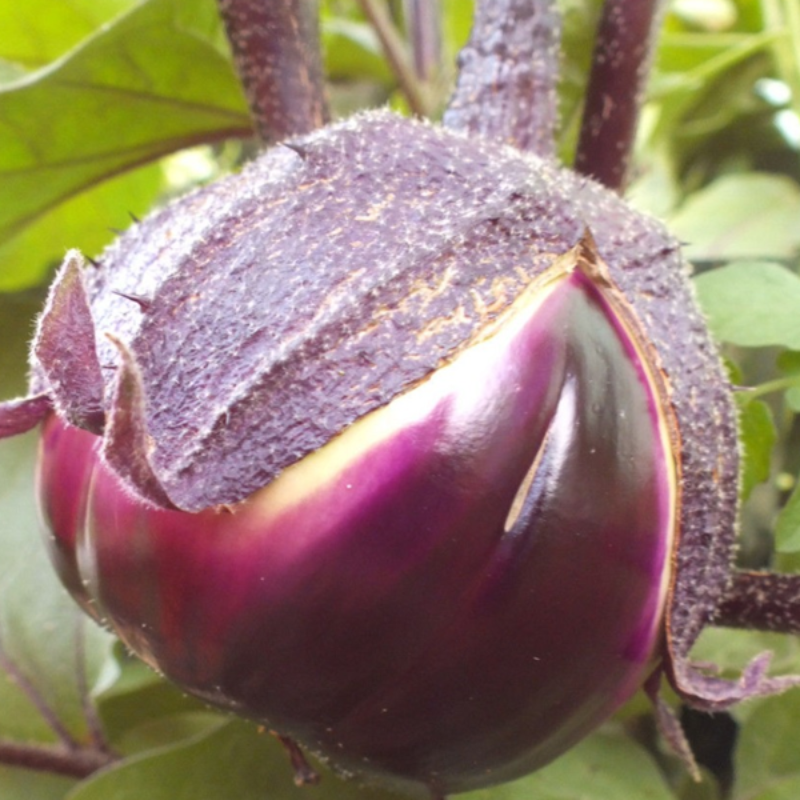- Species and varieties: The Barbarella Purple Eggplant is a variety of Solanum melongena, commonly known as eggplant or aubergine. This particular variety is known for its deep purple color and round, slightly flattened shape. It is a member of the nightshade family, Solanaceae.
- Hybrid or heirloom: The Barbarella Purple Eggplant is typically a hybrid variety, bred for its unique color, shape, and resistance to certain diseases. Hybrid seeds are created by cross-pollinating two different parent plants to produce a seed with specific desirable traits.
- Pruning and training: Pruning is not typically necessary for eggplants, but removing the lower leaves and any suckers that develop can help improve air circulation and reduce the risk of disease. Staking or caging the plants can provide support and prevent the heavy fruits from causing the stems to break.
- Fertilization needs: Eggplants are heavy feeders and benefit from regular fertilization. A balanced fertilizer with equal parts nitrogen, phosphorus, and potassium (such as a 10-10-10 formula) can be applied every 4-6 weeks during the growing season. Additionally, incorporating compost or well-rotted manure into the soil before planting can provide essential nutrients and improve soil structure.
- Hardiness zones: Barbarella Purple Eggplant seeds are best suited for USDA hardiness zones 4 through 10. These zones provide the optimal growing conditions for eggplants, which require warm temperatures to thrive.
- Climate requirements: Eggplants, including the Barbarella variety, require a warm climate with temperatures consistently between 70°F and 85°F (21°C to 29°C). They need full sun exposure and well-drained soil with a pH between 5.5 and 7.0. Eggplants are sensitive to frost and should be planted after the last frost date in your area.






